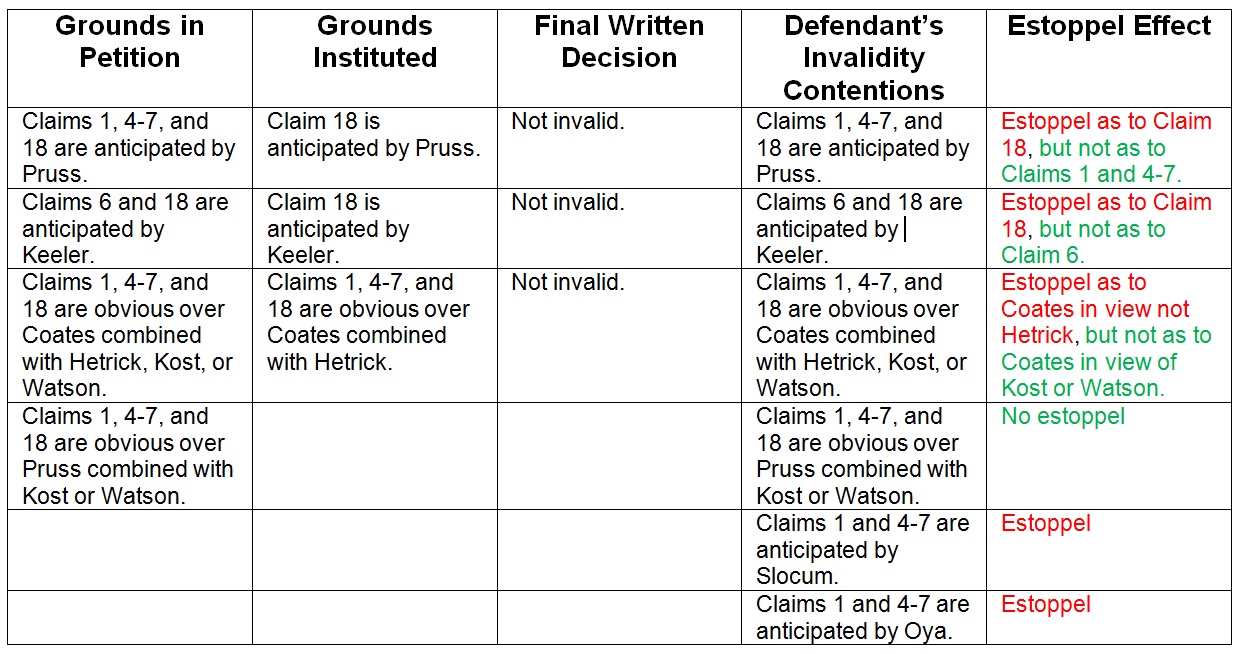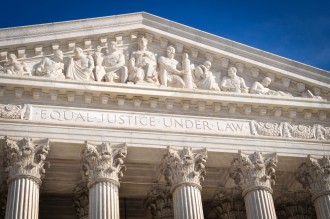
April 19, 2017
IPR Estoppel: Ripe for Gamesmanship?
In Douglas Dynamics LLC, v. Meyer Products LLC, [14-cv-886-jdp] (D. Wisc. Document # 68 April 18. 2017), the district court considered the scope of estoppel after an Inter Partes Review (IPR). The Court identified three categories of potentially estopped grounds:
- Grounds not petitioned.
- Grounds petitioned but not instituted
- Grounds instituted

As to the instituted grounds, these are clearly estopped. As to the grounds petitioned but not instituted, after weighing the competing policy considerations, the court concluded that these were not estopped, citing Verinata Health, Inc. v. Ariosa Diagnostics, Inc., No. 12-cv-5501, 2017 WL 235048, at *3 (N.D. Cal. Jan. 19, 2017) (collecting cases). Finally, with respect to the grounds not petitioned, the court concluded that these were grounds that could have been raised, and thus were estopped. The Court cited SAS Inst., Inc. v. ComplementSoft, LLC., 825 F.3d 1341, 1354 (Fed. Cir. 2016) (Newman, J., dissenting), as well as Precision Fabrics Grp., Inc. v. Tietex Int’l, Ltd., No. 13-cv-645, 2016 WL 6839394, at *9 (M.D.N.C. Nov. 21, 2016); Clearlamp, LLC v. LKQ Corp., No. 12-cv-2533, 2016 WL 4734389, at *8 (N.D. Ill. Mar. 18, 2016).
The impact of this decision is that the PTAB’s decision not to institute on a particular grounds actually hurts the patent owner because estoppel does not apply. A patent owner would be much better off if the ground were instituted and denied. Then, the challenger could not re-raise the grounds in court.
While the district court’s decision that the grounds that were not included in the petition were grounds that “could have been raised” and thus estopped, this determination creates a perverse incentive for patent challengers. A patent challenger is much better off including these grounds in the IPR petition, perhaps in a way that essentially guarantees they won’t be instituted, thereby insulating these grounds from the application of estoppel. The district court noted that it is not bound by a refusal to institute, and while it will consider the PTAB’s reasoning “to the extent it is persuasive,” if the reason for not instituting is that the grounds were not completely developed, a district court likely would allow the challenger not only to re-present the grounds, but to more fully develop it.
While the PTAB has the discretion not to institute an IPR, when they do so, they aren’t doing any favors for a Patent Owner. The PTAB should liberally institute IPRs on the grounds that challengers present. Denying the grounds in the final written decision instead of the institution decision better protects the Patent Owner.



































